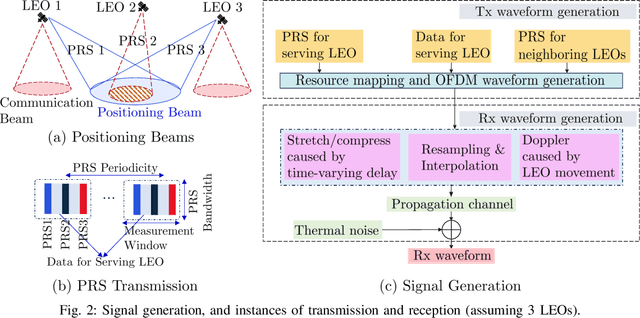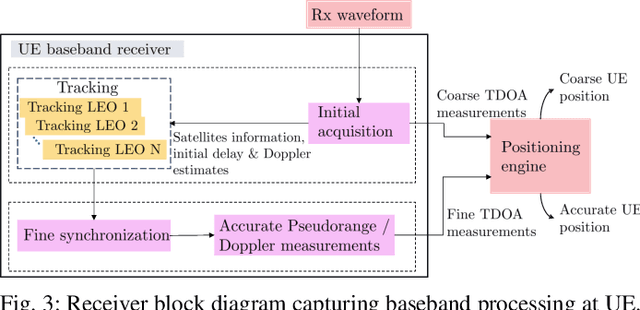LEO-based Positioning: Foundations, Signal Design, and Receiver Enhancements for 6G NTN
Paper and Code
Oct 23, 2024



The integration of non-terrestrial networks (NTN) into 5G new radio (NR) has opened up the possibility of developing a new positioning infrastructure using NR signals from Low-Earth Orbit (LEO) satellites. LEO-based cellular positioning offers several advantages, such as a superior link budget, higher operating bandwidth, and large forthcoming constellations. Due to these factors, LEO-based positioning, navigation, and timing (PNT) is a potential enhancement for NTN in 6G cellular networks. However, extending the existing terrestrial cellular positioning methods to LEO-based NTN positioning requires considering key fundamental enhancements. These include creating broad positioning beams orthogonal to conventional communication beams, time-domain processing at the user equipment (UE) to resolve large delay and Doppler uncertainties, and efficiently accommodating positioning reference signals (PRS) from multiple satellites within the communication resource grid. In this paper, we present the first set of design insights by incorporating these enhancements and thoroughly evaluating LEO-based positioning, considering the constraints and capabilities of the NR-NTN physical layer. To evaluate the performance of LEO-based NTN positioning, we develop a comprehensive NR-compliant simulation framework, including LEO orbit simulation, transmission (Tx) and receiver (Rx) architectures, and a positioning engine incorporating the necessary enhancements. Our findings suggest that LEO-based NTN positioning could serve as a complementary infrastructure to existing Global Navigation Satellite Systems (GNSS) and, with appropriate enhancements, may also offer a viable alternative.
 Add to Chrome
Add to Chrome Add to Firefox
Add to Firefox Add to Edge
Add to Edge